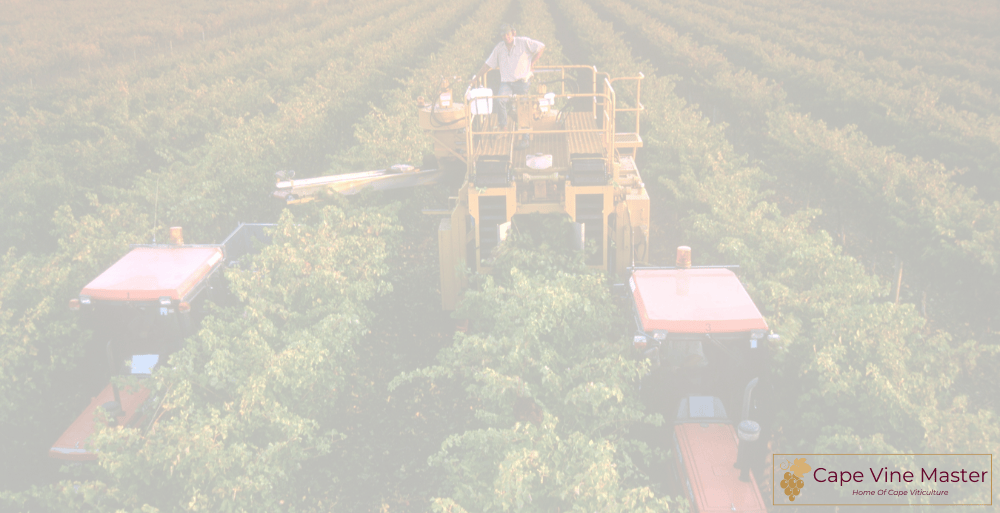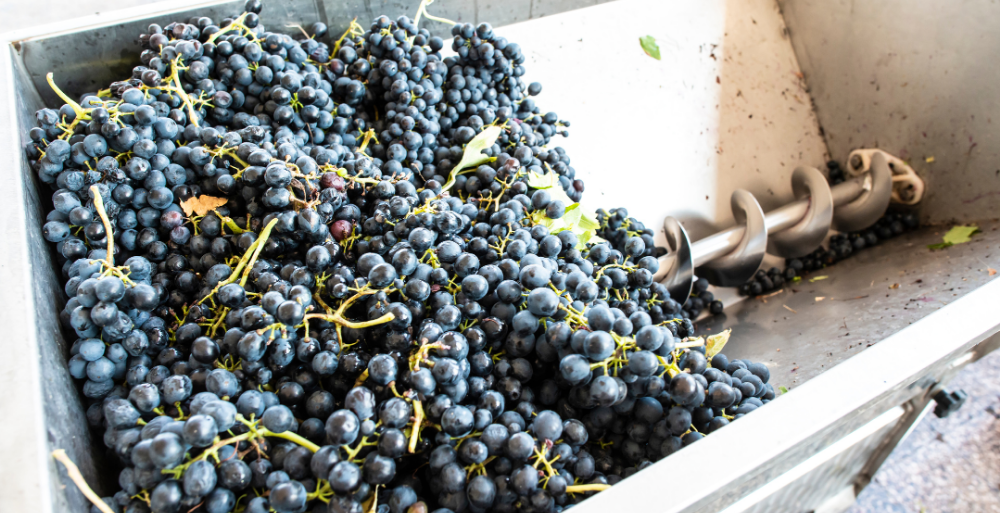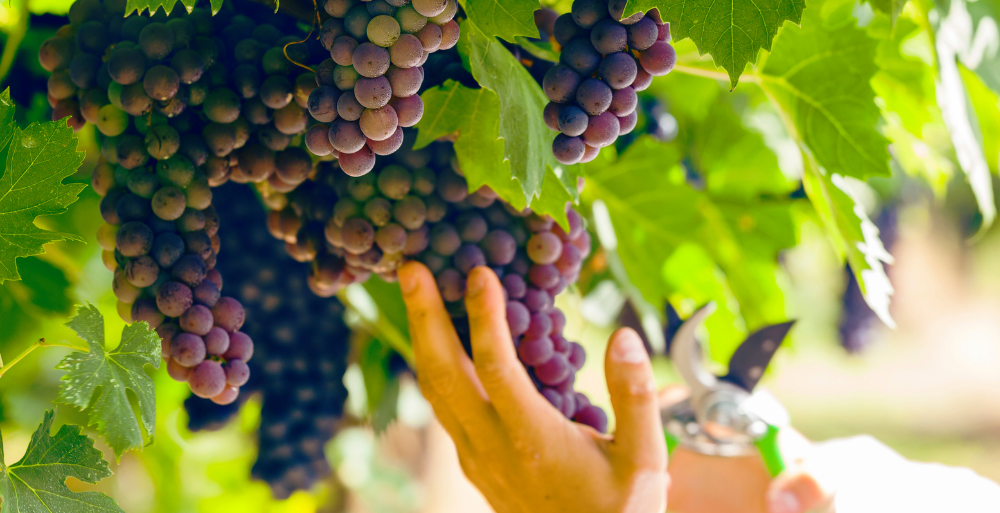
As the 2025 wine grape harvest unfolds across South Africa’s sun-drenched vineyards, the mood in the Cape Winelands is one of cautious optimism. After a challenging 2024 season marked by floods and frost, the 2025 vintage is shaping up to be a triumph of quality, with winemakers reporting vibrant, well-balanced wines that showcase the resilience of an industry navigating a shrinking vineyard area and climatic curveballs. For CapeVineMaster.co.za, this harvest is a chance to toast South Africa’s enduring wine legacy while eyeing innovations that promise a sustainable future. Drawing parallels with 2024, we’ll explore how heavy rains shaped both years, assess the industry’s growth trajectory, and highlight new cultivars and ideas pushing the sector forward.
The 2025 Harvest: A Snapshot of Quality
The 2025 South African wine grape harvest, now past its halfway mark, is poised to deliver exceptional quality, with early estimates suggesting a crop size on par with 2023’s 1.183 million tonnes— a significant improvement over 2024’s record-low 1.099 million tonnes from 87,848 hectares. Dr Etienne Terblanche, head of Vinpro Consultation Services, credits moderate weather conditions and minimal extreme weather disruptions for the upswing. “The growing season has benefited from favorable winter rainfall patterns and a moderate spring, supporting even budding and healthy vine growth,” he notes.
Key highlights include:
- Early-Ripening Cultivars: Chardonnay and Pinotage, hit hard by 2024’s frost, show improved yields and vibrant fruit expression. Chardonnay offers crisp acidity, while Pinotage boasts deep color and spice.
- Mid-Season Cultivars: Chenin Blanc shines with signature freshness and texture, though bunch numbers vary. Shiraz and Merlot show promise but require favorable weather to reach full potential.
- Late-Ripening Cultivars: Colombar and Cabernet Sauvignon hold strong, with early fermentations revealing intense aromas and robust tannins, setting the stage for a stellar vintage if conditions hold.
The 2024 post-harvest period laid a solid foundation, with warm, dry conditions fostering healthy canopies and carbohydrate reserves. Record rainfall in July 2024 replenished irrigation reserves, ensuring water availability despite lower early winter rains. Moderate spring and summer conditions kept disease pressure low, allowing grapes to ripen steadily at optimal levels. Rico Basson, CEO of South Africa Wine, sums it up: “The 2025 vintage showcases the skill, resilience, and dedication of our industry. South African wines continue to impress globally.”





Comparing 2025 to 2024: A Tale of Resilience
The 2024 harvest was a paradox of adversity and excellence, often dubbed “the flood year” for its heavy rainfall and infrastructure damage. Torrential rains, particularly in September 2023, flooded vineyards along riverbanks, causing high downy mildew pressure and lighter yields, especially for early cultivars like Chardonnay and Sauvignon Blanc. The harvest yielded 1.099 million tonnes, a 7% drop from 2023, with juice recoveries lower than usual. Yet, the grapes were remarkably healthy, thanks to low rainfall during picking, producing wines with intense color in reds and tropical profiles in whites. Innovations like drone-assisted disease control helped mitigate losses, showcasing the industry’s adaptability.
In contrast, 2025 has been kinder. While 2024’s heavy July rains caused some infrastructure damage, they ensured ample water reserves, unlike the prolonged wet soils that stressed roots in 2024. The 2025 season started 10 days later, avoiding the frost and flooding that plagued 2024. Moderate temperatures and dry conditions have supported vine vigor, with early cultivars rebounding and late ones showing promise. However, both years share a reliance on strategic water management and producer resilience to navigate climatic challenges. Where 2024’s rains were a double-edged sword—boosting quality but slashing yields—2025’s more balanced rainfall has set the stage for both quantity and quality, potentially matching 2023’s output.
Industry Trajectory: Contracting but Strategic
The South African wine industry is at a crossroads, with a shrinking vineyard area signaling contraction but strategic shifts pointing to value-driven growth. The national vineyard surface has declined steadily, from 45,000 hectares for red vines in 2014 at an annual rate of 1.37%, driven by economic pressures and climate challenges. The 2024 harvest’s low yields, combined with a 17% drop in export volumes to 306 million liters in 2023, reflect a tough period. Globally, wine production fell 10% in 2023, with South Africa down 14%, highlighting a broader industry struggle.
Yet, contraction isn’t the full story. Stock levels reached equilibrium in 2024, balancing strong market demand and avoiding the surplus issues plaguing competitors. Wine tourism is booming, with cellar-door turnover soaring post-Covid, bolstering small and medium-sized estates. The industry contributes R56.5 billion to GDP and employs 270,364 people, underscoring its economic weight. CEO Siobhan Thompson of Wines of South Africa emphasizes, “This success strengthens our position in the global market and supports our efforts to increase export market share.” With 2025’s promising harvest, the focus is on quality and sustainability, positioning South Africa as a premium wine leader.
New Cultivars and Innovations: Pioneering the Future
South Africa’s wine industry is leaning into innovation to stay ahead. While new cultivars aren’t explicitly named in 2025 reports, regions like Worcester are boosting red wine output through new plantings, suggesting experimentation with robust varietals suited to warmer climates. The focus on red cultivars like Shiraz and Cabernet Sauvignon, which thrive in Swartland and Stellenbosch, indicates a shift toward heat-tolerant grapes that maintain quality under climate stress.
Technological advancements are also transforming the sector:
- Drone Technology: First used in 2024 to combat downy mildew, drones are now a staple for precise disease control, reducing chemical use and costs.
- Sustainable Practices: Organic and biodynamic farming is expanding, with estates like Schenkfontein adopting eco-friendly methods to enhance soil health and grape quality.
- Data-Driven Viticulture: Vinpro and SAWIS’s continuous harvest estimates, updated monthly, leverage real-time data to guide producers, improving yield predictions and resource allocation.
- Wine Tourism Innovation: Virtual tastings, like those planned by CapeVineMaster.co.za, and immersive cellar-door experiences are drawing younger, tech-savvy consumers, boosting direct sales.
Ideas like value growth through reinvestment and collaboration are gaining traction. Basson’s vision of a “future of quality, innovation, and sustainability” includes partnerships to elevate South Africa’s global profile, such as SAWIPB’s talent-building programs. The industry is also exploring premiumization, focusing on high-quality, low-volume wines to command better prices, countering the pricing pressures seen in entry-level markets.
A Critical Yet Hopeful Outlook
The 2025 harvest is a beacon of hope after 2024’s trials, with quality poised to rival the best vintages. The heavy rains of 2024, while damaging, taught producers to adapt, and their legacy of ample water reserves has buoyed 2025’s success. However, the shrinking vineyard area and economic pressures signal a need for bold action to sustain growth. New plantings and innovations like drones are steps in the right direction, but scaling sustainable practices and diversifying cultivars could further insulate the industry from climate risks.
For wine lovers, 2025 promises vibrant Chenin Blancs, bold Shiraz, and elegant Pinotage, perfect for your next braai or virtual tasting with CapeVineMaster. The industry’s resilience, paired with a strategic pivot to quality, ensures South Africa’s wines will continue to shine on the global stage. Here’s to a vintage that proves, once again, that the Cape Winelands thrive under pressure.
Follow CapeVineMaster.co.za for updates on the 2025 harvest and join our monthly tastings to sip the season’s best!
